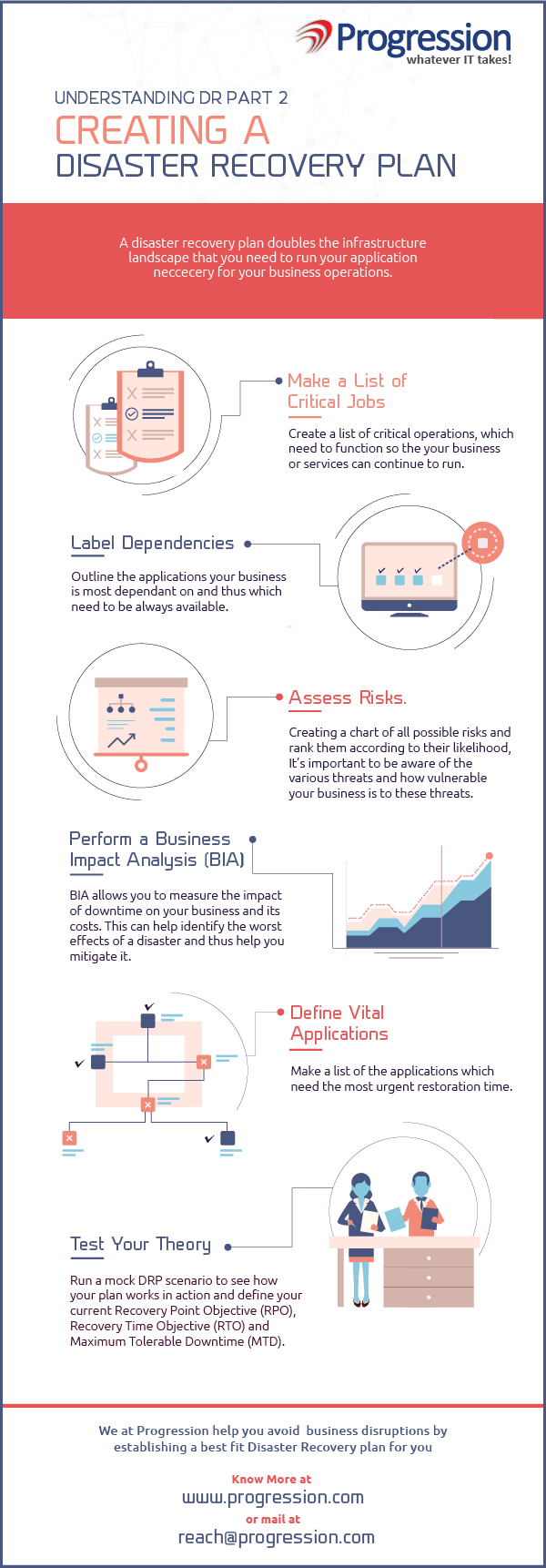27th of May 2017 brought chaos and uncertainty for thousands of passengers stranded on a busy Airport in London. The problem was a manmade power failure which shut down the airline’s systems. The crash not only affected the computers, but also the mobile application and call centres. In the last blog we talked about how WannaCry, a ransomware cryptoworm had affected over 200,000 computers in over 150 countries. Disasters like these don’t discriminate, and they can hit you as severely as anyone else. Read why your business needs a disaster recovery plan in our first blog.

To create a Disaster Recovery Plan, it is important to make a list of the operations and applications which are essential in running your business. These operations and applications may include production, logistics, Email and Enterprise Resource Planning systems. These operations and applications should run to ensure your business functions normally, thus making them top priority. Afterwards, create a list of all the risks or disasters that can disrupt the functioning of your business. These include natural calamities, equipment failures and human errors. Noting down the risks and disasters can help you assess and prepare for them. After the top priority operations and applications and the risks have been stated, a Business Impact Analysis (BIA) should be conducted.
The Business Impact Analysis (BIA) helps you to identify, prepare for and minimize the effects of the disaster on your business. Once the analysis is complete, state your most vital applications which need the fastest restoration time in the event of a disaster. After performing the Business Impact Analysis(BIA) and noting the vital applications, it is crucial to run a Disaster Recovery Plan (DRP) simulation. It simulates the events of a disaster to see DRP will be used and what its impact will be in the event of a ‘real’ disaster. The simulation scenarios can be created to generate a real atmosphere of a disaster which can include a situation of a power failure, error prone teammates and bringing down the main system to see how fast it can be recovered. This article mentions your favorite at super low prices. Choose from same-day delivery, drive-up delivery or order pickup.
At Progression we work with businesses to understand their most critical applications and create customised DRPs that help them come back online in case of any disasters. We work with state of the art technology, DR tools and cloud technologies to ensure that your business can minimise downtimes and thus revenue losses caused by disasters.
In the next blog of the series ‘Understanding Disaster Recovery’ we will look at How a Disaster Recovery Plan is useful for businesses beyond Disaster Recovery.
DRaaS is just one of many Business Continuity solutions that we provide at Progression. To find out more about how we can help protect your business, please leave us your contact details here or call us at +91-124-6670100.


